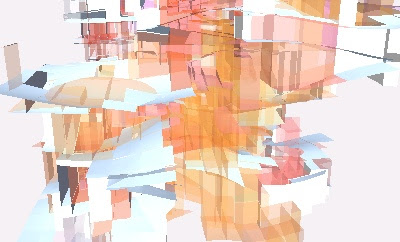30 Drawing Reference Books for Artists, Designers and Anyone Who Wants to Learn How-To Draw
Not so long ago, in Victorian times (1837-1901), the “drawing room” referred to a place for comfortable, relaxed entertaining. The expression is still used in Britain, and in France, the term is “salon,” in the U.S., the equivalent is “living room.” For artists, the drawing room is not confined to one environment, although the studio may be where much of the work is accomplished, it is everywhere the artist is. Drawing happens anywhere, anytime.
Drawing is an empowering life tool accessible to anyone who cares to use it. Perception, communication, persuasion, innovation and invention – drawing develops these skills, which are transferable to any profession or subject.
“If you can draw, even a little bit, you can express all kinds of ideas that might otherwise be lost - delights, frustrations, whatever torments you or pleases you.” – David Hockney
“In the design process, drawing is the act of thought.” – Richard MacCormac
“Drawings are an invaluable aid to my mathematical thinking and an essential ingredient of most of my mathematical expositions.” – Sir Roger Penrose
“I use drawing as an extension of my brain. It is the ones done with spontaneity that give me most pleasure and help crystalise an idea.” – Terence Conran
Learning to draw can be likened to learning a language. It requires exposure, observation, exploration and practice. Learn to draw. Expose your mind to the variety of methods, tools, techniques and forms of drawing. Visit an art museum and observe how artists use drawing. Read books about drawing. Experiment with drawing by trying it out, emulating different styles, using a variety of drawing materials. Make drawing a part of your routine. Make room for drawing.
A German proverb says, “Whoever cares to learn will always find a teacher.” Books are a great place to start. The following is an alphabetical list of recommended books relating to drawing for architecture, animation, exhibit design, fine art, industrial design, and interior design.
1. Drawing in Early Renaissance Italy: Revised Edition
2. Drawing Now: Eight Propositions
3. The Art of Robots
4. Classical Drawing Atelier: A Contemporary Guide to Traditional Studio Practice
5. Art of Drawing
6. Design Drawing
7. Drawing: A Creative Process
8. Drawing and Perceiving: Life Drawing for Students of Architecture and Design
9. Vitamin D: New Perspectives in Drawing
10. Keys to Drawing with Imagination: Strategies and Exercises for Gaining Confidence and Enhancing Your Creativity
11. Color Drawing: Design Drawing Skills and Techniques for Architects, Landscape Architects, and Interior Designers
12. Drawing Lessons from the Great Masters: 100 Great Drawings Analyzed, Figure Drawing Fundamentals Defined
13. Rapid Viz : A New Method for the Rapid Visualization of Ideas
14. Drawing From The Modern
15. Experimental Drawing
16. Drawing Shortcuts: Developing Quick Drawing Skills Using Today's Technology
17. Drawing and Designing with Confidence: A Step-by-Step Guide
18. Freehand Perspective for Designers: Including Shadow-Casting and Entourage
19. Force: Dynamic Life Drawing for Animators
20. Syd Mead's Sentury
21. Basic Perspective Drawing: A Visual Approach
22. Perspective Drawing and Applications
23. Perspective for Interior Designers
24. Drawing: A Contemporary Approach
25. Rendering in Mixed Media
26. From Ordinary To Extraordinary: Art & Design Problem Solving
27. Basic Visual Concepts And Principles For Artists, Architects And Designers
28. The Animator's Workbook: Step-By-Step Techniques of Drawn Animation
29. Life Drawing: A Journey to Self-Expression
30. Design Principles and Problems
Do you have a recommendation? Please share!
Image Reference: "Inconveniences of a Crowded Drawing Room", famous caricature by George Cruikshank, May 6th 1818.

 Amy Leidtke
Amy Leidtke
